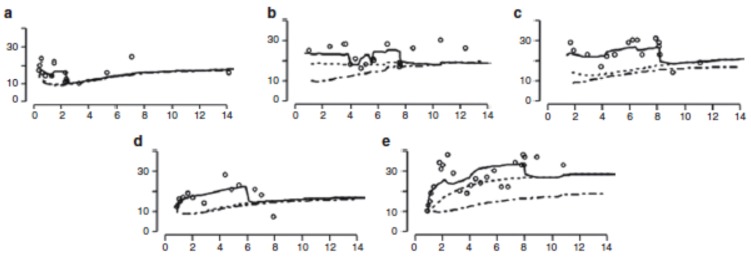Fig. (6).
Observed and model-predicted serum IGF-I concentrations, in relation to postnatal age, in five very preterm children, chronological age (days) on the x-axis and serum IGF-I levels (µg/L) on the y-axis. (a) patient 1; (b) patient 2; (c) patient 3; (d) patient 4; (e); patient 5. All the infants received continuous intravenous infusions of rhIGF-I/rhIGFBP-3. Population predicted endogenous concentrations are shown for an untreated typical child with the same body weight as that of the treated subject. The individual predictions consider unexplained inter-individual differences. The individual total predictions show the best model to fit the observed data and the administered doses of rhIGF-I/rhIGFBP-3. The observed values are depicted as circles, the individual predicted endogenous serum IGF-I concentrations as a dotted line, the population predicted endogenous serum IGF-I concentrations as a broken line and the individual predicted total serum IGF-I as a solid line. Copyright ©Pediatric Research, reproduced with permission.

